Search Images
Browse Content (p. 1364)

Image
Relief from the Interior of the Funerary Chapel of a Meroe Queen
From early 3rh century BCE until the 4th century CE the majority of Meroitic rulers were buried beneath pyramids close to the city of Meroe. On several occasions the kingdom was ruled by queen whose title was Kandake. A distorted reference...
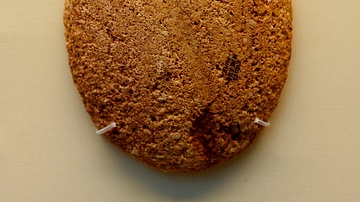
Image
Grinding Stone from Nabta Playa
Seeds and wild grasses were processed with round or oval grinders (manos) of hard quartzitic sandstone. These were rubbed against a larger mill stone to make flour. A depression in the lower stone's surface prevented spillage. The abundance...
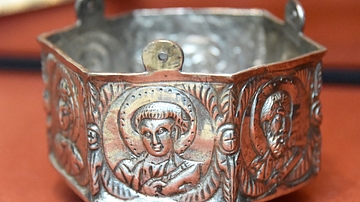
Image
Hexagonal Censer from the Cyprus Treasure
Censers were used for burning incense, which was a popular religious rite in eastern Christian churches. This one would have been suspended on chains, threaded through the holes in the plaques attached to the rim. Each side is decorated with...

Image
Wall-painting of Martyred Saints from Wadi Sarga
Three separate elements were painted upon the wall of a structure near the monastic complex of Wadi Sarga. The central scene, executed in red outline, depicts the saints Ananias, Azarias, and Misael, known as the "three children in the furnace"...
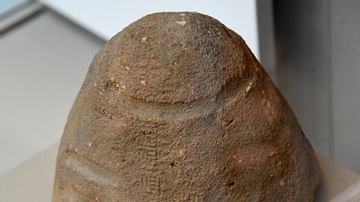
Image
Jar Sealing of Narmer
The name Narmer, written as a catfish within a serekh (royal name box), has been impressed with a large cylinder seal several times onto this conical jar lid. The chisel, the second element of Narmer's name and perhaps originally a title...
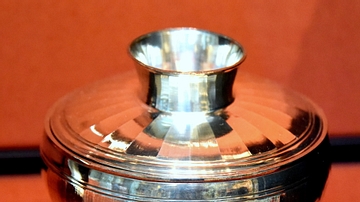
Image
Silver Lidded Bowl from the Carthage Treasure
This lidded bowl is the the only surviving complete example of its kind. The handle on the top doubled as the foot ring, enabling the lid to be turned upside-down and used as a dish for serving food. The outer surface is ornamented with broad...
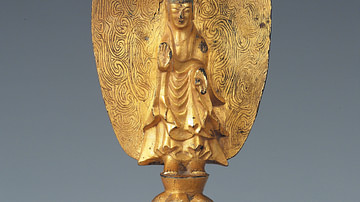
Image
Gilt-bronze Buddha, Goguryeo Kingdom
A gilt-bronze standing Buddha. Cast in Pyongyang, Goguryeo Kingdom, 6th century CE. Height c. 15 cm. (National Museum of Korea, Seoul, South Korea)
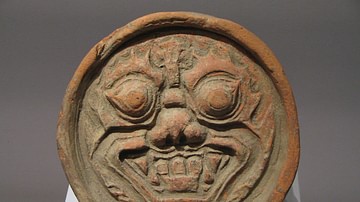
Image
Goguryeo Roof Tile
The end face of a Goguryeo roof tile, 5th-6th century CE. (National Museum of Korea, Seoul, South Korea)
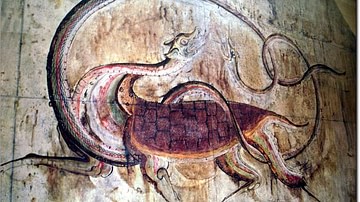
Image
Tortoise & Snake Mural, Goguryeo Tomb
A wall-painting depicting a tortoise and snake (symbolising North) from the Great Tomb at Kangso near Pyongyang. Goguryeo kingdom, early 7th century CE.
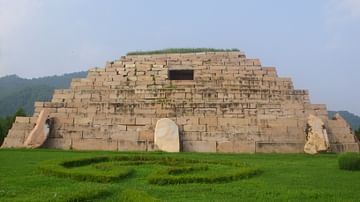
Image
Tomb of Gwanggaeto the Great
The tomb of Goguryeo king Gwanggaeto the Great (r. 391–412 CE), aka the Tomb of the General, Korea. It measures 75 metres along the sides. The dolmen were originally placed at each of the four corners.